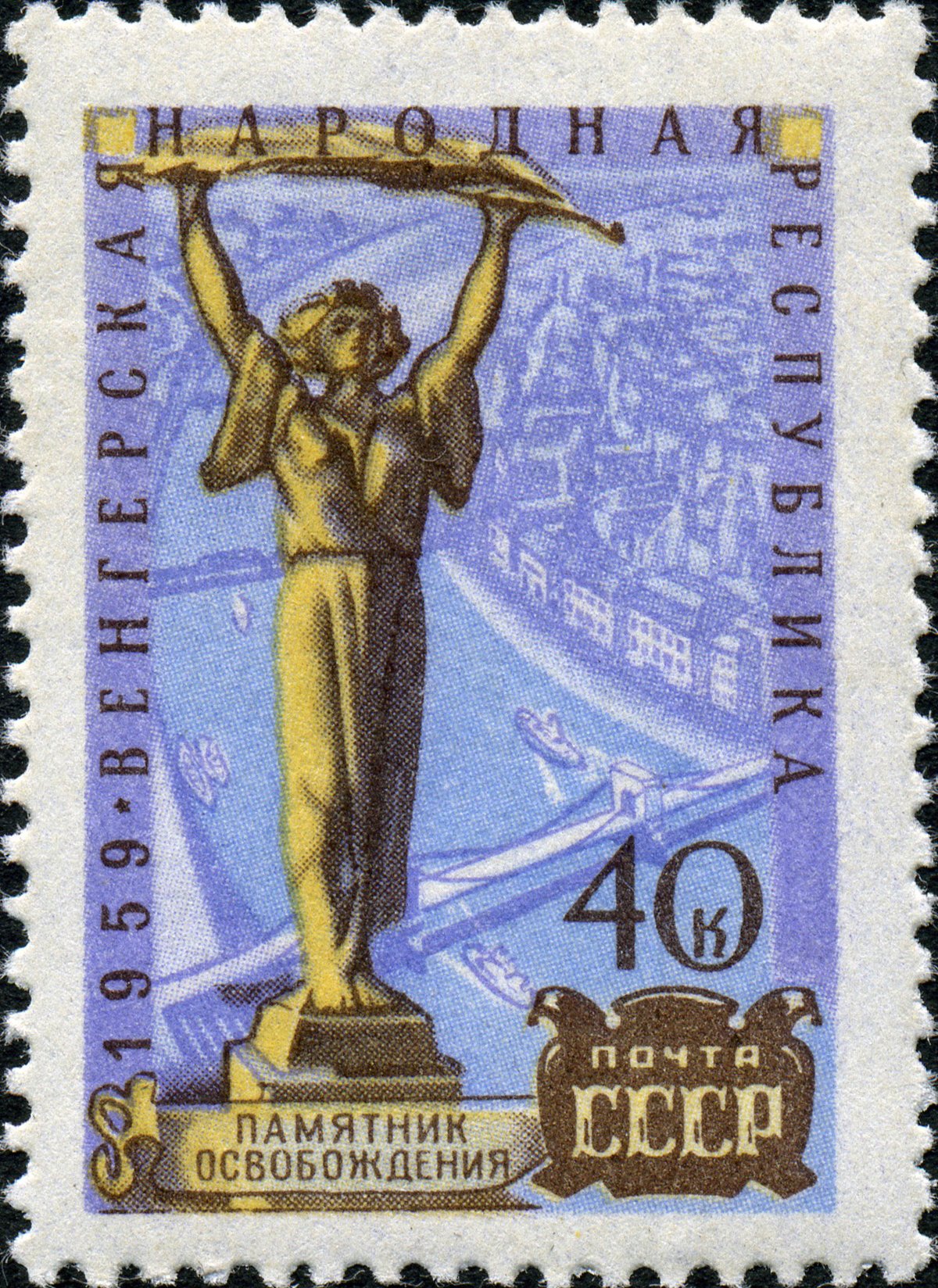
Liberty Statue Budapest: Visiting Hours, Tickets, and Historical Sites Guide
Date: 14/06/2025
Introduction
Perched atop Gellért Hill, the Liberty Statue (Szabadság-szobor) stands as one of Budapest’s most recognizable landmarks, offering visitors breathtaking panoramic views of the city and Danube River. More than a monumental bronze figure, the Liberty Statue encapsulates Hungary’s turbulent 20th-century history. Originally unveiled in 1947 to honor Soviet soldiers who liberated Budapest from Nazi occupation, its symbolism has evolved, now serving as a tribute to all who have sacrificed for Hungary’s independence and freedom. This comprehensive guide explores the Liberty Statue’s origins, design, changing political significance, and essential visitor information—including opening hours, tickets, accessibility, and travel tips. Whether you’re planning a visit for historical exploration or sightseeing, this resource will prepare you for an unforgettable experience. For the most current details, consult We Love Budapest, Budapest.com, and Travelling Sunglasses.
Table of Contents
- Origins and Construction
- Design and Symbolism
- Political Context and Changing Meanings
- Post-Communist Transformation
- Visiting the Liberty Statue: Hours, Tickets, and Accessibility
- Travel Tips and Nearby Attractions
- The Liberty Statue in Contemporary Budapest
- Frequently Asked Questions (FAQ)
- Conclusion
- Sources
Origins and Construction
The Liberty Statue was commissioned before the end of World War II. In January 1945, as the Siege of Budapest raged, the Budapest National Committee resolved to build a monument honoring Soviet soldiers who died liberating the city from Nazi occupation (Wikipedia; We Love Budapest). Marshal Kliment Voroshilov, representing Soviet interests, played a crucial role in both the monument’s location and the selection of Zsigmond Kisfaludi Strobl as its sculptor. While the original site was Horváth Garden, Voroshilov insisted the statue be placed atop Gellért Hill, at the Citadella’s southeast bastion, ensuring visibility across Budapest (We Love Budapest).
Construction proceeded rapidly under Soviet oversight. The monument was completed and inaugurated on April 4, 1947, the second anniversary of Budapest’s liberation, in a ceremony attended by Hungarian and Soviet dignitaries (We Love Budapest).
Design and Symbolism
The Liberty Statue is a striking 14-meter-tall bronze sculpture of a woman holding a palm leaf, a symbol of peace, atop a 26-meter limestone pedestal—reaching a total height of approximately 40 meters (Wikipedia). Zsigmond Kisfaludi Strobl’s design, featuring windswept hair and outstretched arms, conveys hope and renewal. The palm leaf was added at Soviet request, replacing the original idea of a child.
Originally, the monument comprised additional elements: three six-meter-tall bronze Soviet soldiers and a three-meter stone statue. The stone soldier was destroyed during the 1956 Hungarian Revolution and later relocated to Memento Park after the fall of communism. Two additional figures—a torch-bearer and a dragon slayer—remain at the base (We Love Budapest).
Political Context and Changing Meanings
Initially, the Liberty Statue paid homage to Soviet troops, with an inscription in Hungarian and Russian: “To the memory of the liberating Soviet heroes [erected by] the grateful Hungarian people [in] 1945” (Wikipedia). However, the Soviet presence shifted from liberator to occupier in Hungarian eyes, especially after the brutal suppression of the 1956 Revolution. The monument was damaged during this uprising and became a focal point for both official commemorations and public resentment, earning the local nickname “the bottle opener” (We Love Budapest).
Post-Communist Transformation
After communism’s fall in 1989, debates erupted regarding the statue’s fate. While some called for its removal, it was ultimately preserved due to its prominence and evolving symbolism (We Love Budapest). In 1993, the Soviet soldier statues were moved to Memento Park, and the inscription was changed to: “To the memory of all who sacrificed their lives for the independence, freedom, and prosperity of Hungary” (Wikipedia). This recontextualization allowed the Liberty Statue to become a universal symbol of Hungary’s struggle for freedom.
Visiting the Liberty Statue: Hours, Tickets, and Accessibility
Visiting Hours
The Liberty Statue, set in a public park atop Gellért Hill, is accessible 24 hours a day, year-round (Budapest.com). While there is no official closing time, visiting during daylight hours is recommended for safety and optimal views.
Tickets
No tickets or entry fee are required to visit the Liberty Statue, Citadella terraces, or Gellért Hill. If you wish to visit Memento Park (where the original Soviet statues now reside), tickets are required.
Accessibility
The climb up Gellért Hill is steep and includes some uneven paths. While paved, it may challenge visitors with mobility impairments. There is limited parking at the base; taxis or public transport can bring you close to the hill, but the final ascent must be completed on foot (Travelling Sunglasses).
Travel Tips and Nearby Attractions
- Best Time to Visit: Spring and autumn offer mild weather and fewer crowds. Sunrise and sunset provide stunning light for photography (Travellers Worldwide).
- Getting There: Public transport to Gellért tér (metro Line 4), followed by a 20–30 minute walk up Gellért Hill. Alternatively, take a taxi for a less strenuous approach.
- Nearby Attractions: The Citadella fortress (currently under renovation), Saint Gellért Monument, Cave Church, and the famous Gellért and Rudas Thermal Baths enrich your visit (Budapest.com).
- Facilities: Limited refreshment options and public toilets at the summit.
- Photo Opportunities: Panoramic city views, especially of the Parliament, Buda Castle, and Danube bridges, are outstanding from the terraces.
The Liberty Statue in Contemporary Budapest
Today, the Liberty Statue stands as both a historical marker and a symbol of national resilience. Its silhouette dominates Budapest’s skyline, and the site is a focal point for commemorations, cultural events, and tourism. Ongoing restoration projects are enhancing accessibility and visitor facilities, ensuring the monument’s preservation for future generations (Hungary Today; We Love Budapest).
Frequently Asked Questions (FAQ)
Q: What are the Liberty Statue’s visiting hours?
A: The Liberty Statue and Gellért Hill are open 24 hours daily, but daylight visits are recommended for safety and optimal views.
Q: Is there an entrance fee or ticket required?
A: No, visiting the Liberty Statue and the terraces is free.
Q: How do I get to the Liberty Statue?
A: Take the metro to Gellért tér, then walk up Gellért Hill. Taxis can drop you near the summit.
Q: Is the site accessible for people with disabilities?
A: Due to steep and uneven paths, the summit is not fully wheelchair accessible.
Q: Are guided tours available?
A: Many city tours include the Liberty Statue and Gellért Hill.
Q: What’s the best time for photography?
A: Sunrise and sunset offer the best lighting and vistas.
Conclusion
The Liberty Statue is more than a monumental sculpture—it is a living symbol of Hungary’s resilience, freedom, and evolving identity. Its commanding location atop Gellért Hill provides not only a journey through history but also some of Budapest’s most spectacular views. With free year-round access, the Liberty Statue is a must-see destination for any visitor seeking to experience the city’s heritage and beauty.
For the latest updates, travel tips, and guided tours, consult Budapest.com, We Love Budapest, and Travelling Sunglasses. Download the Audiala app for curated travel guides and stay connected with Budapest’s vibrant heritage.
Sources
- Liberty Statue (Budapest), 2025, Wikipedia (Wikipedia)
- Budapest’s iconic liberation monument turns 70 years old, We Love Budapest (We Love Budapest)
- Visiting the Liberty Statue in Budapest: History, Hours, and Tips, Budapest.com (Budapest.com)
- 13 Unique Memorials and Statues in Budapest, Trip to Budapest (Trip to Budapest)
- Budapest Gellért Hill & Citadella Ultimate Guide, Travelling Sunglasses (Travelling Sunglasses)
- Budapest Citadel’s Renovation Entering its Final Phase, Hungary Today (Hungary Today)
- Sights and Culture: Citadel & Liberty Statue Major Renovation Plans, We Love Budapest (We Love Budapest)
- Best Time to Visit Budapest, Travellers Worldwide (Travellers Worldwide)








































































































































































